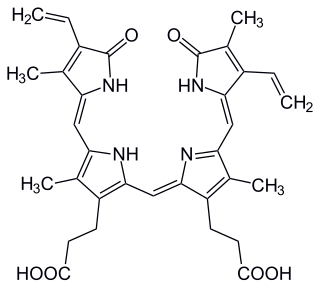Phelsuma parkeri, commonly known as Parker's day gecko or the Pemba Island day gecko, is a diurnal species of lizard in the family Gekkonidae. The species is endemic to Pemba Island, Tanzania, and typically inhabits banana trees and dwellings. The Pemba Island day gecko feeds on insects and nectar.

Skinks are lizards belonging to the family Scincidae, a family in the infraorder Scincomorpha. With more than 1,500 described species across 100 different taxonomic genera, the family Scincidae is one of the most diverse families of lizards. Skinks are characterized by their smaller legs in comparison to typical lizards and are found in different habitats except arctic and subarctic regions.

Anolis is a genus of anoles, iguanian lizards in the family Dactyloidae, native to the Americas. With more than 425 species, it represents the world's most species-rich amniote tetrapod genus, although many of these have been proposed to be moved to other genera, in which case only about 45 Anolis species remain. Previously, it was classified under the family Polychrotidae that contained all the anoles, as well as Polychrus, but recent studies place it in the Dactyloidae.

The Solomon Islands skink, also known as prehensile-tailed skink, monkey-tailed skink, giant skink, zebra skink, and monkey skink, is an arboreal species of skink endemic to the Solomon Islands archipelago. It is the largest known extant species of skink.

Lipinia is a genus of skinks, lizards in the family Scincidae. Species in the genus Lipinia are commonly called lipinias.

Biliverdin is a green tetrapyrrolic bile pigment, and is a product of heme catabolism. It is the pigment responsible for a greenish color sometimes seen in bruises.

Threatened fauna of Australia are those species and subspecies of birds, fish, frogs, insects, mammals, molluscs, crustaceans, and reptiles to be found in Australia that are in danger of becoming extinct. This article lists species classified as threatened species under the Commonwealth Environment Protection and Biodiversity Conservation Act 1999.

Richard Wolfgang Semon was a German zoologist, explorer, evolutionary biologist, a memory researcher who believed in the inheritance of acquired characteristics and applied this to social evolution. He is known for coining the terms engram and ecphory.
The green-blooded skink, sometimes (ambiguously) known as green tree skink, is a scincid lizard species native to Papua New Guinea and the Solomon Islands. This small and arboreal lizard is common, but poorly known.
Hampton Wildman Parker, CBE was an English zoologist.
Green blood may refer to:
Plasmodium minuoviride is a parasite of the genus Plasmodium.
The Samkos bush frog is a moss frog found in Cambodia in the Cardamom Mountains. It was first described in 2007.

Saiphos equalis, commonly known as the yellow-bellied three-toed skink or simply three-toed skink, is a species of burrowing skink found in eastern Australia. It is the only species classified under the genus Saiphos.
The prehensile green tree skink is a species of skink. It is found in Papua New Guinea.

Papuascincus flavipes, also known as the common green tree skink, is a species of skink found in Papua New Guinea.
Parker's emo skink or Viti copper-headed skink is a species of lizard in the family Scincidae. It is found in Fiji.
Parker's green tree skink is a species of skink found in New Guinea.
Semon's green tree skink is a species of skink found in New Guinea.
Susan L. Perkins is an American microbiologist and the Martin and Michele Cohen Dean of Science at The City College of New York (CCNY). Her expertise includes the pathology and genetics of malaria parasites and other haemosporidians infecting myriad non-primate species.









